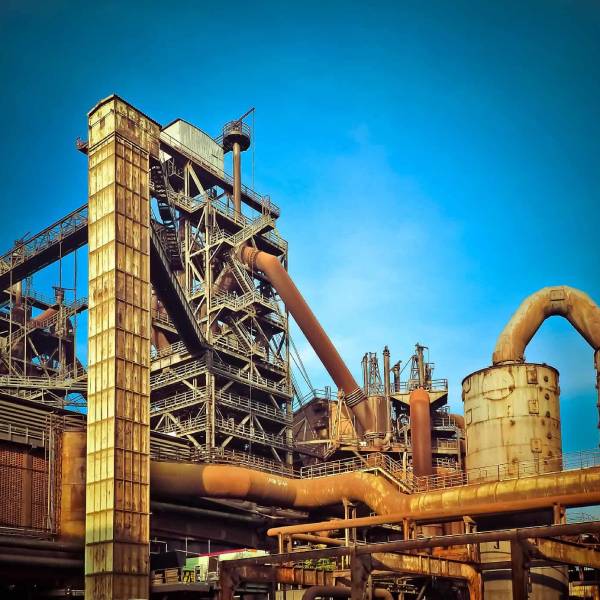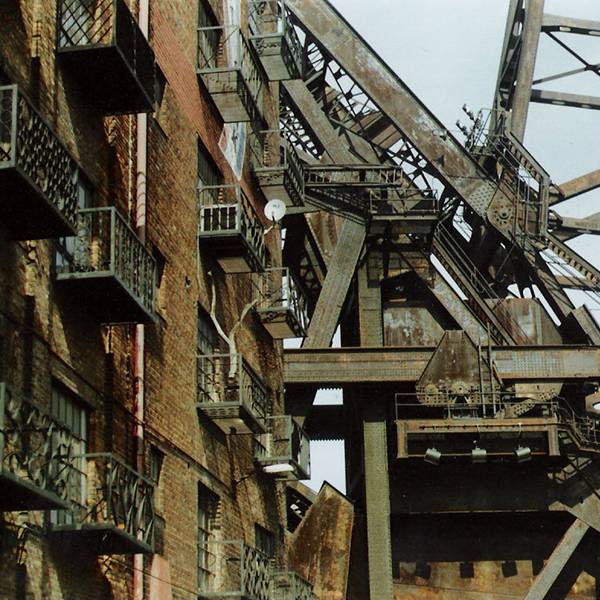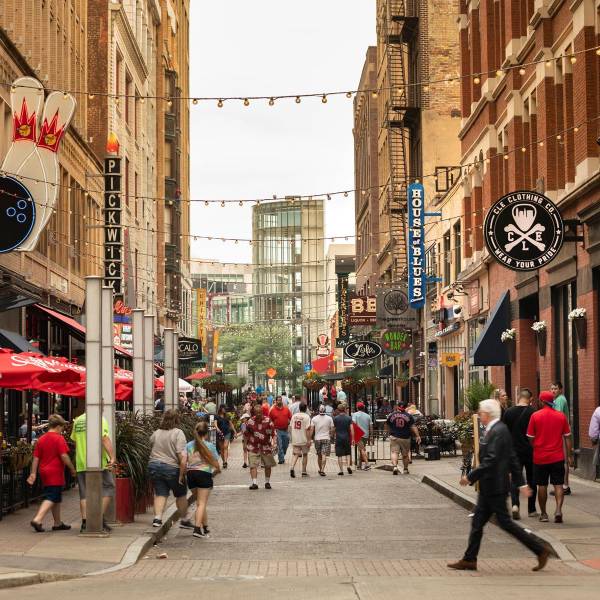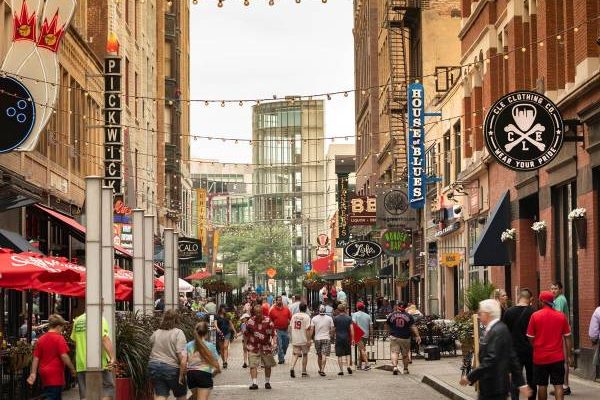Where is the Rust Belt Located?
When people ask, “where is the Rust Belt,” they are seeking an understanding of a significant American region. This area spans parts of the Northeastern and Midwestern United States. Historically known for its booming industrial sector, the Rust Belt has experienced seismic economic shifts. The region includes cities like Detroit, Cleveland, Pittsburgh, and Buffalo, among others. These cities stood as giants of industry, driving America’s manufacturing and production during the 19th and 20th centuries. They contributed to the nation’s prosperity and technological advancements, gaining worldwide reputation. Industries flourished, jobs were abundant, and populations grew quickly. The Rust Belt thrived on steel production, automobile manufacturing, and other heavy industries. It was a testament to American ingenuity.

Geographical Spread and Influence
Geographically, the Rust Belt stretches from New York through Pennsylvania, Ohio, Indiana, and Michigan. It also extends to parts of Illinois and Wisconsin. These states and cities formed the backbone of America’s industrial might. They produced vast quantities of goods, including steel, automobiles, and machinery. These products were essential to both domestic markets and international trade. The transportation networks in this region supported its industrial dominance. Freight trains and ships transported raw materials and finished goods. The Great Lakes provided a crucial waterway for moving products. This geographical expanse formed an interconnected industrial ecosystem.
Economic Shifts and Contemporary Challenges
The Rust Belt has faced significant economic shifts in recent decades. Globalization led to the outsourcing of many manufacturing jobs. This hit the region hard, causing economic decline and population loss. Technological advancements also made old manufacturing processes obsolete. Cities like Detroit and Cleveland saw industries crumble and job opportunities fade. These economic changes brought new challenges, but also prompted innovation. Some cities have started to reinvent themselves, embracing new industries. Tech companies and green energy initiatives are now part of the Rust Belt’s future. The region is still navigating its economic transformation. These efforts aim to revitalize its historic cities and communities. The Rust Belt’s story is one of resilience and continual adaptation.
Historical Significance of the Rust Belt
Understanding “where is the Rust Belt” also requires an appreciation of its historical significance. During the Industrial Revolution, cities within the Rust Belt became powerhouses of manufacturing and steel production. Factories and mills provided jobs for millions, contributing significantly to America’s economic prowess. Detroit, Cleveland, and Pittsburgh emerged as key players in this industrial boom. Everyday life revolved around the heavy industry, as families depended on these jobs for livelihood. Railroads and waterways facilitated the transport of goods, boosting economic activity even further. The Rust Belt became a symbol of American ingenuity and hard work.

The Diverse Workforce and Community Development
The region’s industrial boom attracted a diverse workforce, including immigrants seeking better opportunities. People from Europe, Asia, and other parts of the world flocked to these cities. They built homes, established businesses, and formed vibrant communities. These communities developed a strong sense of identity and pride in their hard work. Ethnic neighborhoods emerged, each contributing unique cultural traditions and flavors to the region. Social clubs, churches, and schools became important community hubs where people gathered. Over time, these diverse populations blended, creating a rich tapestry of cultural and social life. The Rust Belt exemplified the American melting pot in many ways.
Economic Challenges and Transformation
However, technological advancements and global competition led to significant changes, reshaping the economic landscape of the Rust Belt. Automation and efficiency reduced the need for as many workers in factories. Companies started outsourcing jobs to countries with cheaper labor costs, increasing unemployment. Industrial decline led to abandoned factories and decaying infrastructure, earning the area its “Rust Belt” moniker. Local economies struggled to recover from these losses, and populations started to dwindle as people moved away. Despite these challenges, some cities have tried to revitalize their economies through technology and service industries. The story of the Rust Belt is one of resilience and transformation, as the region adapts to new economic realities while honoring its rich industrial heritage.
Economic Decline and Challenges
In asking “where is the Rust Belt,” one must also consider the economic transformations it has undergone. The latter half of the 20th century saw a decline in manufacturing jobs due to automation and outsourcing. Many factories closed, leading to economic stagnation and high unemployment rates.
This decline created a range of social and economic challenges for Rust Belt cities. Urban decay, population loss, and reduced public services became common issues. The shift emphasized the need for economic diversification and reinvestment in these once-thriving industrial hubs.

Efforts at Revitalization
Addressing “where is the Rust Belt” today involves examining ongoing revitalization efforts. Various initiatives aim to breathe new life into these regions by attracting new industries, fostering innovation, and investing in infrastructure. Cities like Pittsburgh have reinvented themselves as hubs for technology and education, leveraging their industrial past to build a new future.
Local governments, businesses, and community organizations collaborate on projects that promote economic growth and improve quality of life. These efforts include developing green spaces, renovating historic buildings, and supporting small businesses. Diversifying the economic base is crucial for the long-term revitalization of the Rust Belt. In the Rust Belt, collaborative projects strengthen the community, much like a rainbow belt unifies diverse colors. These initiatives, like green spaces and small business support, create a vibrant, inclusive economy.
Cultural Impact and Legacy
The question “where is the Rust Belt” extends beyond geography and economics; it also encompasses significant cultural dimensions. The region has a rich cultural heritage shaped by its industrial history. From blue-collar ethos to ethnic diversity, the Rust Belt’s culture is a testament to the resilience and adaptability of its people.
Cultural landmarks, museums, and festivals celebrate the industrial legacy and contributions of the diverse communities that built these cities. The arts and music scenes in Rust Belt cities remain vibrant, drawing inspiration from the region’s unique history. This cultural richness adds depth to the identity of the Rust Belt. Just as serpentine belt noise indicates mechanical issues, Rust Belt cities’ vibrant arts and music scenes reflect their historical complexities. These cultural elements enrich the region’s identity significantly.
The Future of the Rust Belt
Considering “where is the Rust Belt” inevitably leads to questions about its future. While challenges remain, the region shows signs of transformation and renewal. Investment in education, technology, and sustainable development continues to pave the way for a more resilient and diversified economy. Understanding where the Rust Belt lies can guide strategies like learning how to use a gait belt. Both require knowledge and proper techniques to ensure sustainable progress and safety.
Initiatives focusing on workforce development aim to equip residents with skills relevant to modern industries. As cities adapt to changing economic landscapes, community engagement and innovation play crucial roles. The future of the Rust Belt depends on its ability to balance honoring its past with embracing new opportunities.
In conclusion, the answer to “where is the Rust Belt” encompasses a complex tapestry of geography, history, and cultural significance. Located in the Northeastern and Midwestern United States, this region has experienced profound economic shifts that have shaped its identity. Understanding its past, present, and future involves appreciating its industrial legacy, recognizing the challenges it faces, and supporting efforts for revitalization. As the Rust Belt continues to evolve, its story remains a vital part of America’s broader narrative, embodying resilience, innovation, and the enduring spirit of its communities.
